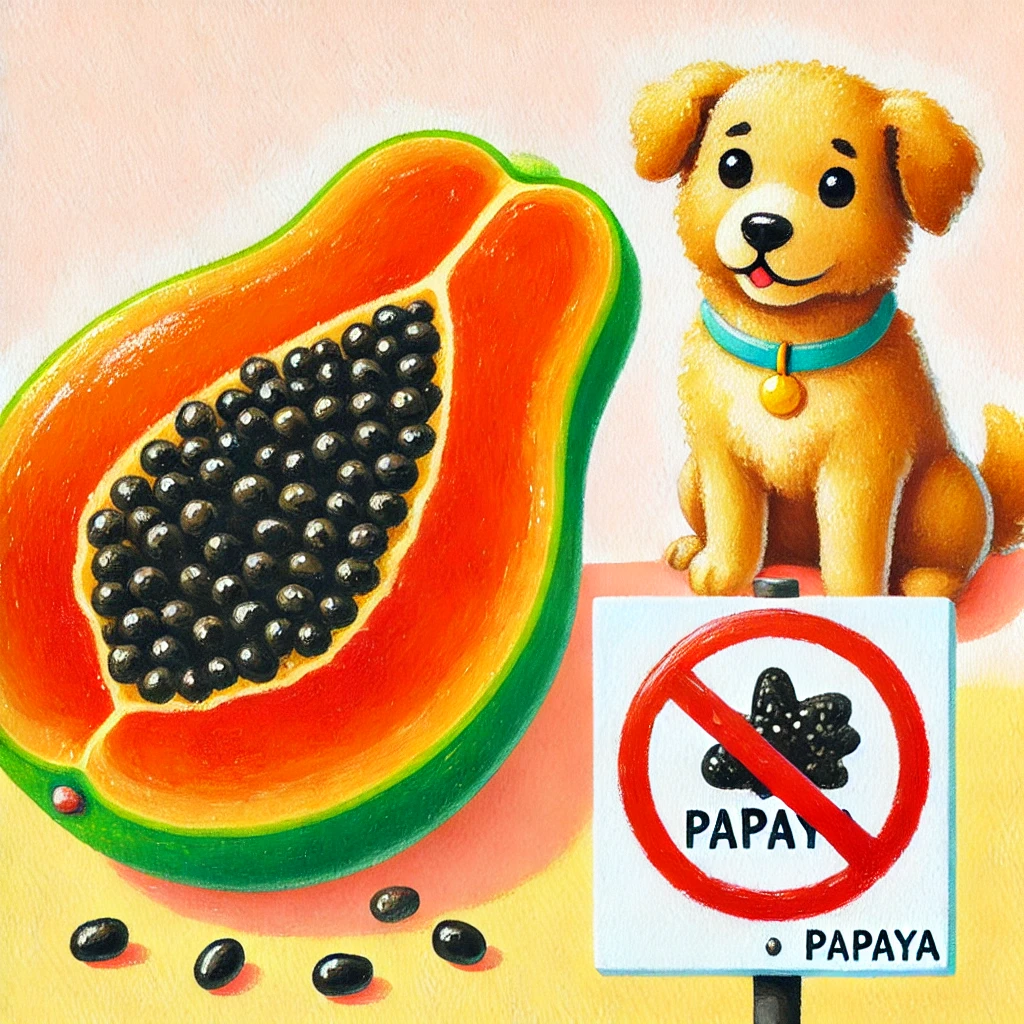There are lots of tasty stuff on this planet of ours, everything from gourmet snails to exotic fruit such as papaya. These vibrantly coloured snacks fill us with flavour and nutrition and are the ideal way to a healthful addition to our meals. However, as loyal dog lovers, one naturally wonders: But can dogs eat papaya? Not all human foods are dog-safe, so it’s always good to check before you share.
This guide is where we will get into the nitty-gritty of papaya for dogs. Whether they should even have a nibble of it in the first place, this tropical fruit is full of surprises with its nutrient-dense nature as well as its possible negatives so put your paws up and kick back! We’re here to break it down to the core and answer: Is papaya a good treat for dogs?
What’s So Great About Papaya?
Papaya is a tropical superfruit, an ideal source of nutrients and benefits. The thing is, the internet is a mixed bag and when it comes to papaya, there are a bunch of myths out there. Now that we got the facts right, deem what makes this fruit fancy.
Here are some of the nutrients that a medium papaya has:
- Calories – Calories provide the energy necessary to perform daily activities.
- Potassium — Helps maintain proper function of muscles and nerves, and helps regulate blood pressure.
- Folate (Folic Acid) – A B vitamin assisting in red blood cell production and healthy cell growth, especially necessary for pregnant dogs and people.
- Magnesium — Aids in energy production and muscle function so your pooch can stay on the move. This antioxidant-rich vitamin is essential for maintaining and improving your immune system, skin appearance, and iron absorption!
- Vitamin A– Maintains eye and organ health, and also promotes immune health.
- Papain – An enzyme in papaya that breaks down protein, papain is great for dogs with a sensitive stomach
- Lycopene – An effective antioxidant that protects us from free radicals.
Papaya is without doubt one of the richest fruits in vitamins — it is no wonder papaya is dubbed a superfruit. But here are some cons, before you hurry down to the shop.

The Dark Side of Papaya
Unfortunately, like all good things, there are some drawbacks to papaya. Here are some of the more common myths and problems — let us break them down.
Scent May Not be for Everyone
Some people find papaya’s scent off-putting; blame it on the enzyme papain. The smell of unripe papaya has been described as somewhat unpalatable to even the most sensitive of noses, so it is worth considering if your dog may be the same!
Pregnancy Concerns
It is believed that papaya could be dangerous for pregnant dogs (or humans). The reality is this: ripe papaya is okay in small quantities. However, the unripe fruit, along with the leaves and roots, contains abundant latex which can cause contraction in the womb. Just to be on the safe side, consume only small portions of ripe papaya.
Are the Seeds Safe?
Papaya seeds can have traces of cyanide, just like seeds of apples and cherries do. Educational purpose: This is typically not a harmful amount, but keep it to a low number. Feeding a few seeds shouldn’t be detrimental to your dog, but they shouldn’t make a habit of eating them.
The “Throat Irritant” Myth
Unripe papaya can irritate your dog’s throat because it contains large amounts of papain. On the contrary ripe papaya can soothe the throat. The lesson? Opt for the 100% ripe fruit for free, and never the green!

Is Papaya Safe for Dogs?
The short answer? Yes! Papaya is an amusing, scrumptious snack for dogs—if served sparingly and arranged properly.
Start Slow
However, dogs can also be picky when it comes to food, just like humans, and their stomachs are no different. Take a small piece and see if it will react. Papaya is a great fruit, but if you indulge in too much at once, it may lead to tummy troubles, so take it easy on papaya initially.
Keep It Seed-Free
Papaya seeds contain a very small amount of cyanide (like every living thing does), so as we said, never leave inside. Seeds can also lead to intestinal obstructions if consumed in bulk.
Peel It and Cut It Small
Papaya skins are tough and difficult for dogs to digest. ALWAYS peel it first and cut the fruit into bite size pieces. This limits the choking potential and makes it digestible to your canine.
Moderation is Key
The high fiber and natural sugars are not a normal part of a dog’s diet. However, both come with a hefty side of gastrointestinal distress so it is best served small, think one or two slices for a medium sized pooch.
Skip the Dried Papaya
Dehydrated papaya might be a great convenient option, but it also has a higher sugar content. Fresh fruit is a better choice, not just for humans (cause no human should eat sugar) but also for diabetic dogs, who must avoid such sugary treats.

Benefits of Papaya for Dogs
Papaya can offer some benefits to your pooch, when provided in moderation:
- Aid Digestion: Papain and fiber in papaya may improve mild digestive problems.
- Immune support: The immune system benefits from vitamins A and C.
- Antioxidants for Health: Lycopene and vitamin C can be useful to help reduce inflammation as well as inhibit free radicals, which is an important property during your dog’s older age.
When Should Papaya Not Be Given to Dogs
Here are some reasons you may want to pass on the papaya treat:
- Minute Amount: If your dog has a sensitive stomach, papaya may be too rich for them.
- Diabetes – Since papaya contains natural sugar, it may increase blood sugar, so avoid feeding it to diabetic dogs.

Several Tips for Papaya Feeding to Dogs:
In conclusion, here are the points to remember while giving papaya to your dog:
- Ripe, fresh papaya is the only one to use – Unripe fruit may have a higher content of latex and papain, which can be a little rough on their digestive system.
- Peel – This can be tough for your pooch to digest & could potentially cause obstructions.
- Add small doses — See how they react to a little of it Add it as an occasional treat, if they are happy with it.
- Regarding seeds – Before serving, remove all bits of seeds, or at least take out all those that harbor traces of cyanide as well as those that can be a choking hazard.
- Choose fresh fruit – Do not eat dehydrated or processed papaya, as it usually contains a lot of sugar.
The Bottom Line: Is Papaya for Dogs?
Yes, dogs can eat papaya—in moderation! And just like that, you can unveil this delicious tropical delight without a care in the world. Papaya is an excellent treat to include in a balanced diet only because it doesn’t make up a meal. Just make sure you follow some of these tips, and your dog can experience the tropics too! Adding papaya to their food as an occasional snack is not just great for their overall diet but is also a great way to make them fall in love with you even more.


